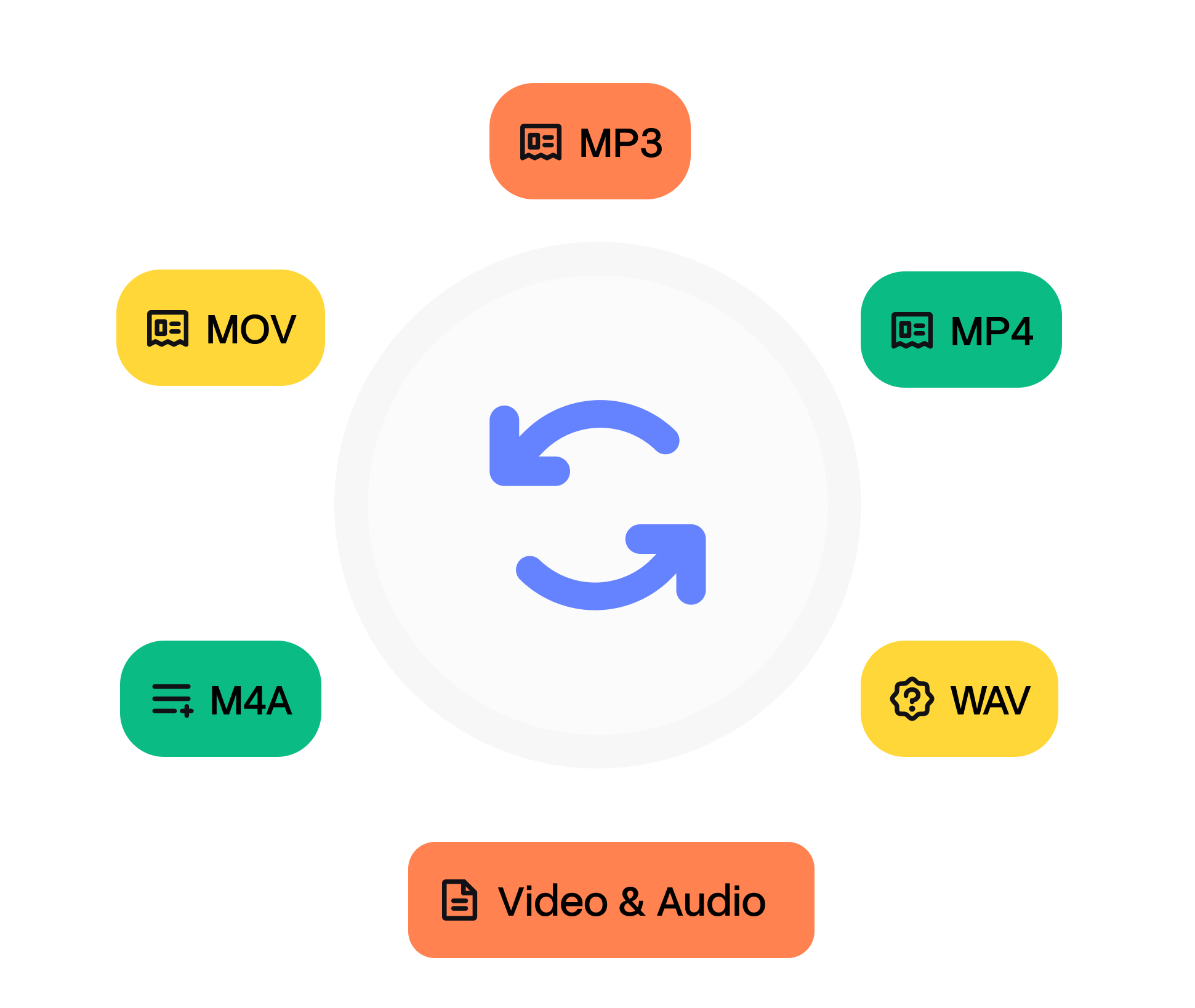1. Upload your M4A file
Start by dragging and dropping your M4A file into the upload area, or click to browse your device and select your file in the list.
Convert your M4A (.m4a) file to FLV (.flv) in seconds straight from your browser. No installs. No watermarks. 100 % free.
Convert from M4A to FLV but also 47+ other formats.
No signups, no fees, no hidden restrictions. Convert M4A to FLV directly in your browser for free.
We take your security seriously. All file transfers use 256-bit SSL encryption.
No installs needed; convert M4A to FLV right from your browser, on any device, anytime.
Start by dragging and dropping your M4A file into the upload area, or click to browse your device and select your file in the list.
Next, pick FLV as the format you’d like to convert your video into. Alternatively, we support +47 formats that you can choose from. When you’re ready, hit the Convert button.
Once the conversion is complete, you’ll get a download link right away. Just click to save the file to your device. It’s fast, easy, and doesn’t require any software installation.

.m4a is the generic extension for audio‑only MP4 files. Inside, you will typically find AAC or ALAC streams plus metadata for chapters, cover art, and lyrics. The format provides gapless playback, efficient compression, and wide ecosystem support. Apple coined .m4a in 2001 to distinguish music downloads from copy‑protected .m4p tracks sold on the iTunes Store. Because MP4’s audio profiles required no licence fees, many podcasters and game developers adopted .m4a for better quality than MP3 at the same bit‑rate. Today .m4a is recognised by Android, Windows, and most car infotainment systems.
Flash Video (FLV) is a container that encapsulates Sorenson Spark, VP6, or H.264 video together with MP3/AAC audio and on‑screen data events for ActionScript. It became the backbone of early YouTube and news portals because the small header footprint yields quick progressive playback. Macromedia introduced FLV in 2002 with Flash Player 6, offering the first ubiquitous plug‑in‑based video experience on the Web. After Adobe’s acquisition, FLV evolved to support H.264 in 2007 but began losing ground once HTML5 <video> gained traction. By the end of 2020, Adobe disabled Flash, and most CDNs convert FLV archives to MP4 or HLS.
Need to convert your audio file from M4A to FLV? It’s simple. Just upload your file, choose the output format, and click ‘Convert’. That’s it — no downloads, no complicated software, and no hidden costs. Our tool is designed to be fast, secure, and completely free, so you can turn your files into the format you need in seconds.
Whether you’re converting audio for sharing, editing, or playback on different devices, our converter ensures high-quality output every time. After your conversion, you’ll also have the option to transcribe video to text, making it easy to turn your FLV files into accurate, editable text in just a few clicks.
Play .m4a files in iTunes/Music, Groove, or any Bluetooth speaker that accepts AAC. DAWs like Logic Pro and Audition decode on import. If an older device refuses the extension, simply rename to .mp4 both refer to the same container.
Desktop apps like VLC or MPC‑HC open FLV seamlessly. If you encounter a Spark‑encoded clip, convert using FFmpeg: `ffmpeg ‑i input.flv ‑c:v h264 output.mp4`. Web players no longer stream FLV, so upload sites recommend remuxing to MP4 or WebM.
Other tools